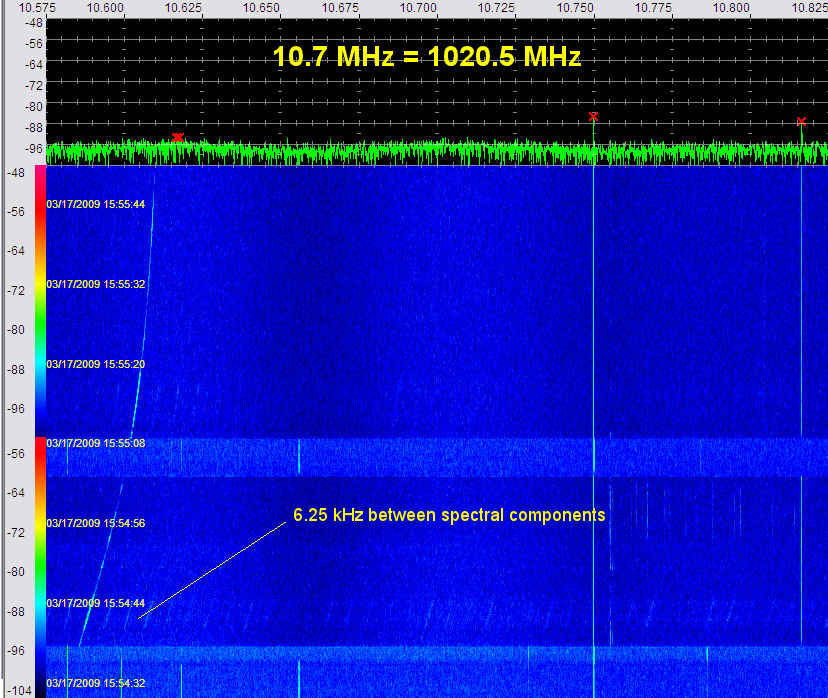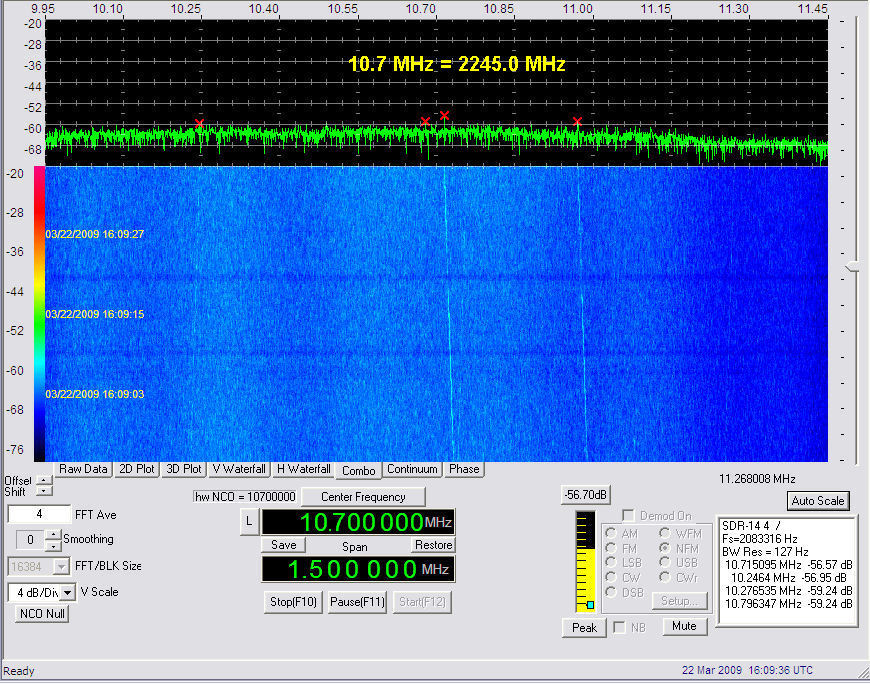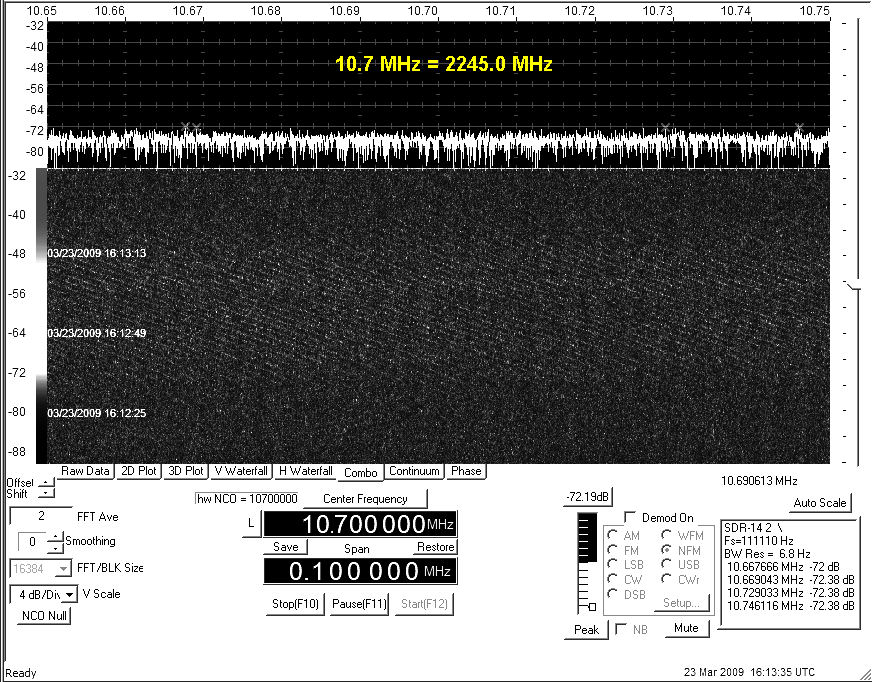
From earlier versions of the Eurokot User's manual I ahve gathered that the maneuverable upper stage, Briz-K, transmits on 1020.5 MHz and 1043.5 MHz. ESA's GOCE, the Gravity field and steady-state Ocean Circulation Explorer, transmits on 2245.0 MHz at a bndwidth of 1 MHz and up to 14 dBW of power.
The Rokot launch vehicle took off from Plesetsk at 1421:13 UT. The Briz-K fired again for 13 seconds at 1539 UT to circularize the orbit and GOCE was separated from the Briz-K at 1555 UT. This event took place over the horizon of ESA's ground station in Kiruna, Sweden and the whole sequence of events also took place over my horizon. It was a bit tricky to switch the receiver between two antennas and preamplifiers while changing the settings of the software-defined receiver. I tried all three of the frequencies listed above but only picked up signals on 1020.5 MHz. The brief spectromgram that is shown below displays a wide-band signal spectrum. The antenna used was a hand-held yagi for the lower mobile-phone GSM band. I probably missed the S-band signal because of temporary lack of voltage on one of the preamplifiers. At 1 GHz the AR-8600 receiver inverts the doppler shift. That is why the doppler effect in the spectrogram appears reversed.

The spectrogram below shows first reception of signals on 2245.0 MHz during an overhead pass of GOCE in Stockholm. The two carriers are about 256 kHz apart.

The spectrogram below shows first reception of signals on 2245.0 MHz during an overhead pass of GOCE in Stockholm. The specturm looks much different from the day before. Spectral components are about 2 kHz apart. Of course I used a narrow bandwidth to try to catch the carrier that I saw the day before.I have used grayscale to be able to see the many spectral components easier.

![]()